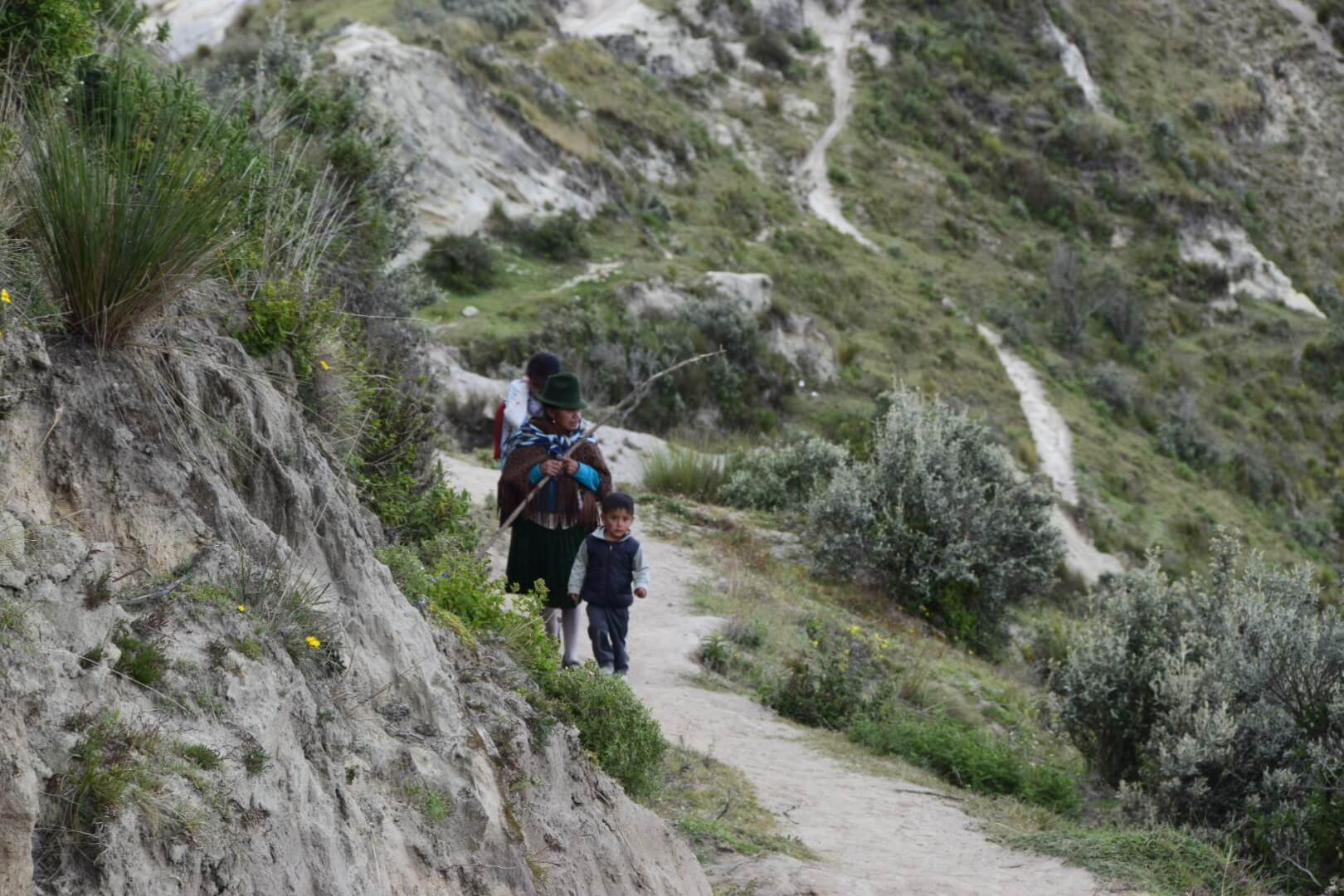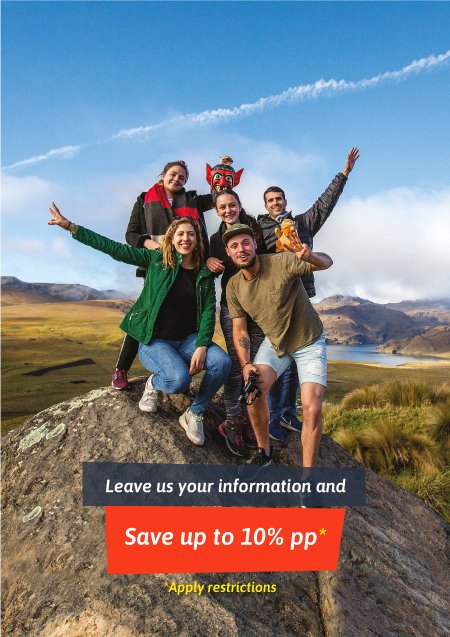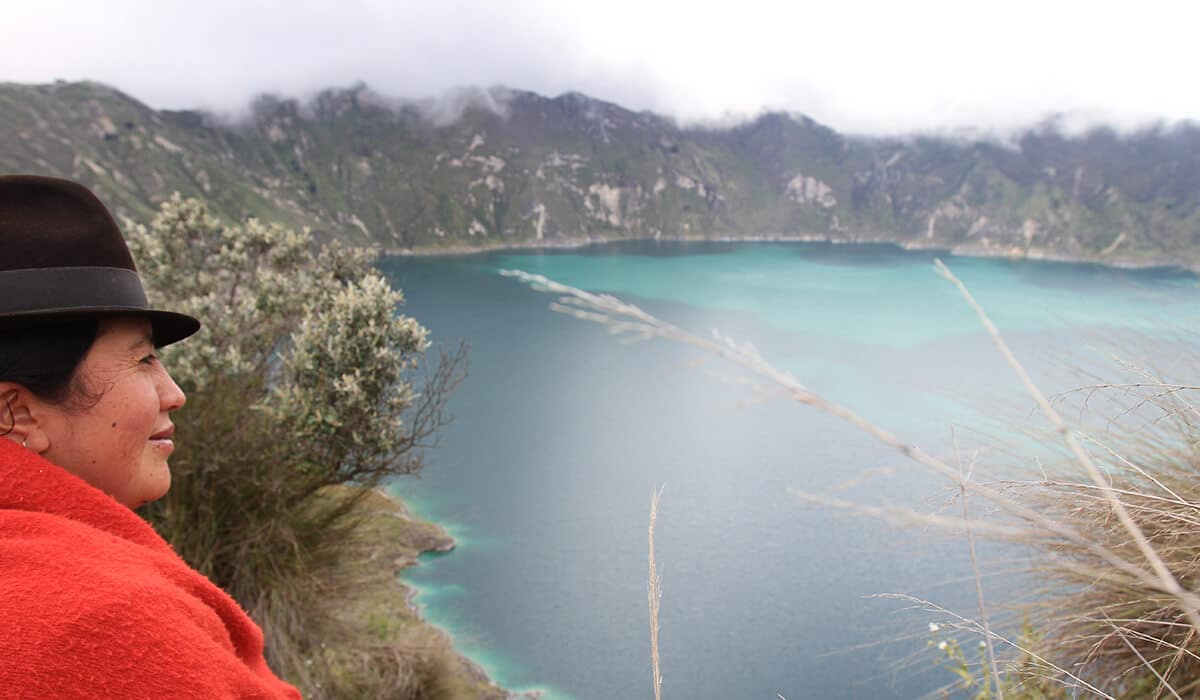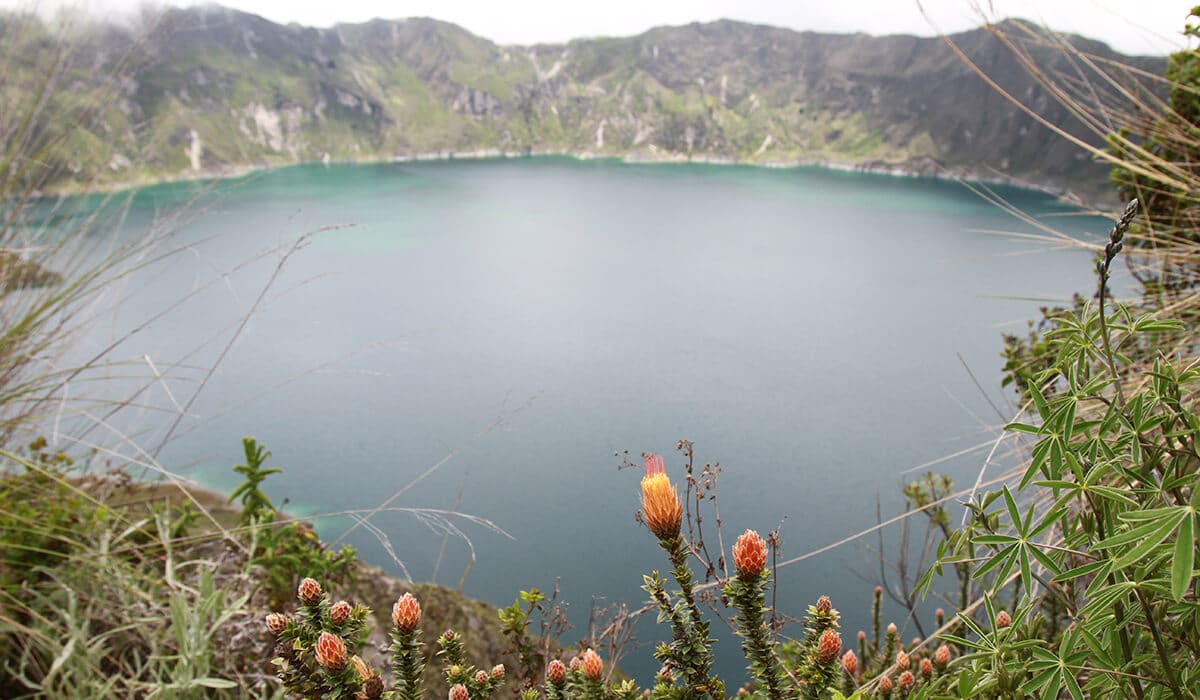As multi-day trekking becomes more popular in Ecuador, routes and trails are being logged online and made more available to visitors. The Quilotoa Loop from Quito is an oldie, but goodie and one of the best options for travelers that didn’t come with all the necessary gear to camp out in the Andean highlands for multiple nights.
What is Quilotoa Loop?
The Quilotoa Loop is a customizable, multi-day trek in the region surrounding the Quilotoa crater, which can include a section into and/or around the crater itself. One popular route for the Quilotoa Loop starts in Quilotoa and ends in Sigchos, passing through the towns of Chugchilán and Isinliví. However, you can go about the trek in many different ways.
Something to keep in mind is that this trek isn’t necessarily a “loop”. That is, you probably won’t finish where you started, it really just depends on the route you decide to take. To complete the actual “loop”, start in Sigchos (which you can get to by bus from Latacunga), hike to Isinliví, Chugchilán, Quilotoa, and end in Zumbahua.
So far we’ve mentioned the following two routes:
- Easier route: Latacunga, Quilotoa, Chugchilán, Isinlivi, Sigchos, Latacunga
- Harder route due to the increase in elevation, full loop: Latacunga, Sigchos, Isinlivi, Chugchilán, Quilotoa, Zumbahua, Latacunga.
Notice these routes go in opposite directions! The reason you might choose one direction over another is due to changes in elevation during the trek. From Sigchos to Isinlivi and Chugchilán, the elevation increases significantly, making it a harder direction overall.
Also, you probably won’t be hiking from Latacunga to the first town of your chosen route, be it Quilotoa or Sigchos. We suggest you take a bus for this leg of the journey, as well as your departure from the last town to Latacunga and onwards to your next destination.
Generally speaking, the Quilotoa loop takes about 2-4 days, unless you prefer to take it easier, in which case it could take up to 7 days. However, since there’s so much to see in this region of Ecuador, I personally would only devote 4 days to this route and use the remaining days to explore other nearby areas of the Ecuadorian Andes. Note: these estimates do not include transit time to Latacunga from Quito (or elsewhere) to start the route, or back to Quito or your next destination.
Best itinerary to start your Quilotoa loop from Quito
As much as I love the idea of completing a full loop, I would recommend you follow option 1 listed above when planning the Quilotoa Loop from Quito. This would take a total of 4 days and look something like this:
- First day: Quito-Latacunga-Quilotoa. Early start leaving Quito and heading to Latacunga, then directly to the Quilotoa Crater. There, you can either hike around the crater rim or into the crater itself. Spend the night in Quilotoa or, if you have the gear, camp out in the crater!
- Second day: Quilotoa to Chugchilán. 5-7 hours hiking to complete, spend the night at the Black Sheep Inn or another local hostel in town.
- Third day: Chugchilán to Isinliví. 4-6 hours hiking, spend the night in Isinliví.
- Forth day: Isinliví to Sigchos to Latacunga and even back to Quito. Start early. 3-4 hours hiking from Isinlivií to Sigchos. Jump on a bus from Sigchos to Latacunga and then another one to arrive in Quito that evening.

Tips and recommendations for your trip
Here are a few useful tips if you’re planning to do the Quilotoa Loop from Quito.
#1: Always start early, especially if you’re travelling by bus
Bus arrival/departure times are not always on schedule. Make sure you give yourself sufficient time in case there’s a delay to avoid arriving at bus terminals at odd hours, especially late at night (for security reasons).
#2: You don’t need gear, so don’t bring it!
One of the perks to the Quilotoa Loop is that you can stay in comfortable and affordable hostels at each town along the route. Most of these provide meals and, if not, you’ll find many other places serving food, so don’t worry about bringing a camping stove and food to cook. The gear you might need includes:
- All of your cash – there are no ATMs here!
- Warm layers (fleece, under armor, gloves, hat) and a windbreaker, it gets cold in this part of the Andes!
- Shoes and socks – bring a reliable pair of shoes and socks, preferably waterproof hiking boots and wick dry socks, and sandals to wear when not hiking
- Sun protection – hat, sunglasses, sunblock, chapstick/lip salve
- Water filter – carry at least 1 liters of water with you at all times
- First aid kit – you never know when you might need it!
- Flashlight/headlamp
- Rain protection for yourself and your backpack
- Swimsuit (there are jacuzzis at some hostels and you never know when you’ll want to jump into a river!)
- Toilet paper isn’t always available in public toilets. Make sure to have some handy!
- Snacks: trail mix, cookies, chips/crisps, tuna, wraps, chocolate, sandwiches, etc.
#3: Expect to get lost
There are many blogs online detailing how to get from Point A to Point B to Point C, but once you’re there in person, you’ll realize that landmarks change and there’s no shame is asking for directions from the locals when you need it. That said, make sure you ask three different people and cross-reference answers with whatever map you have before moving forward! Better safe than sorry.
Wanderbus Ecuador
If you’re headed to the Quilotoa Loop from Quito, consider taking the Wanderbus, which will drop you off at Quilotoa Crater. There are a number of passes to choose from, including the Jacamar Pass. If you’re interested in exploring more of Ecuador, the Wander Pass is another good option, taking you to the country’s top destinations.
By taking the Wanderbus, you skip the often stressful bus terminals in Quito and other towns, including Latacunga. It’s a convenient way to explore the country because it’s a hop-on hop-off system. This means that if you decide you want to stay in a given area for more than that day, you can and you won’t lose any Wander Pass privileges. All you have to do is make sure you know when the next Wanderbus is coming around to move on to your next destination.
Traveling with the Wanderbus is also safer than traveling by regular bus because you get picked up and dropped off at more convenient locations, and at more convenient times, which mitigates security risks in cities, especially. Finally, there’s a bilingual guide on every ride and probably a few cool travelers to befriend 🙂
Happy Wandering!





